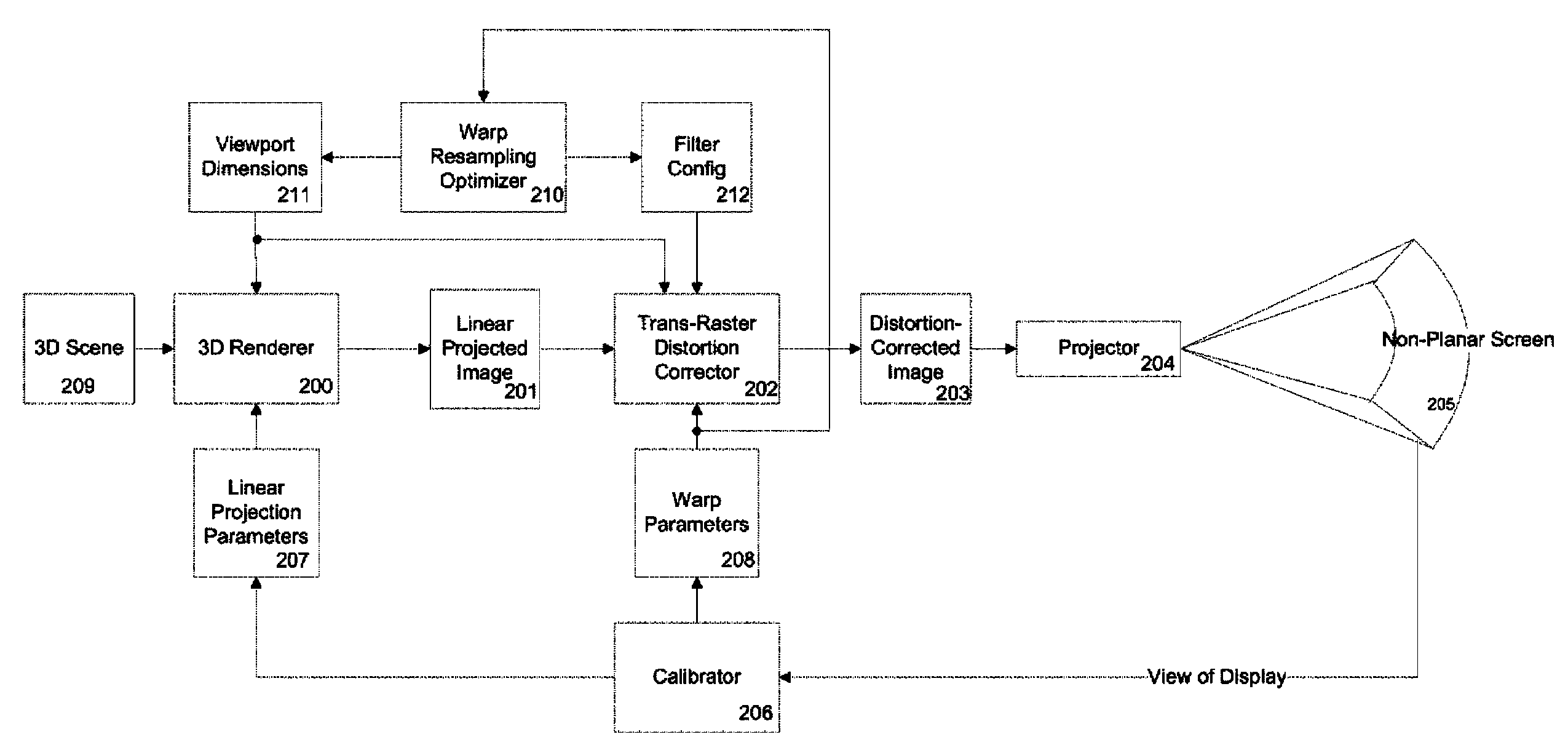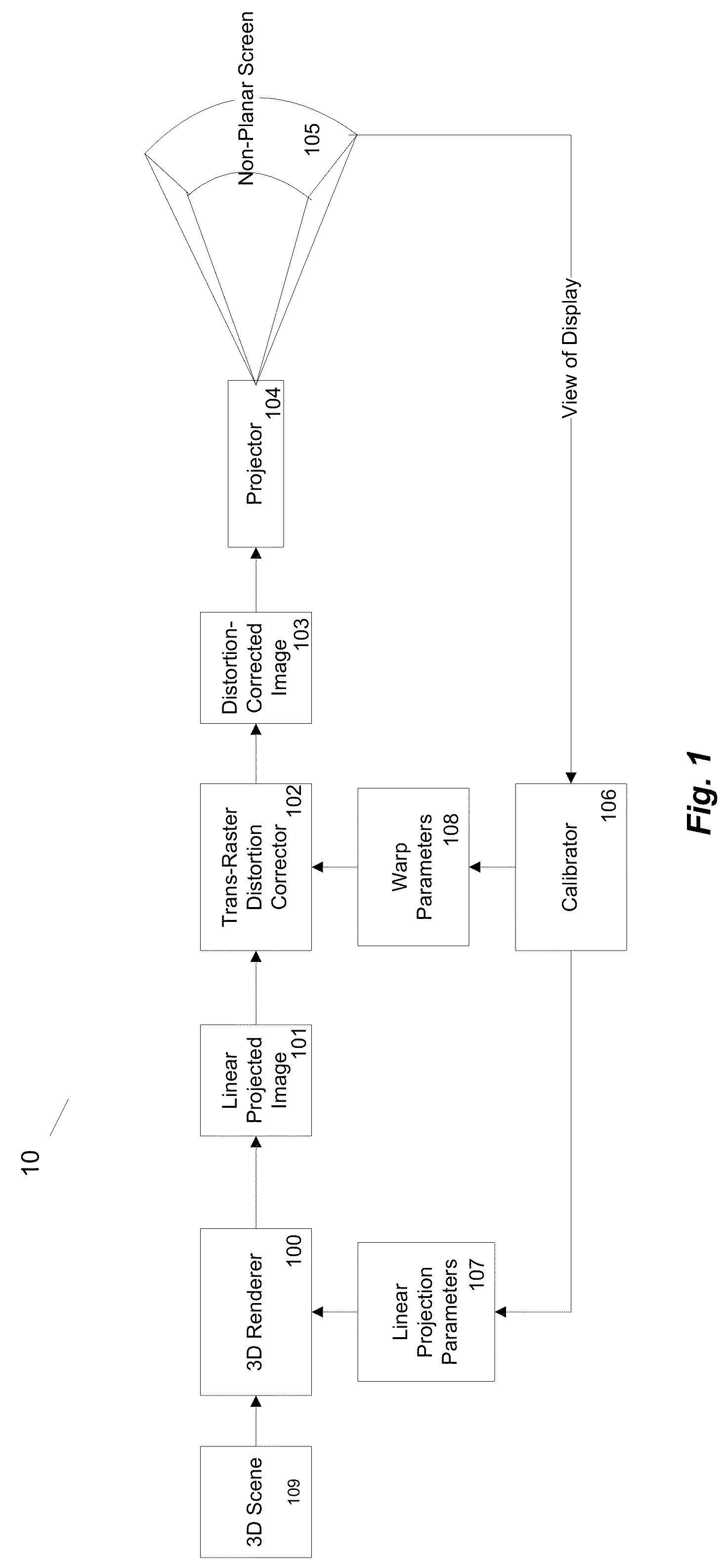Sampling of non-planar display surfaces
a non-planar display surface and sampling technology, applied in the field of computer graphics, can solve the problems of introducing photometric distortion, introducing geometric distortion, and very expensive creation of optics, and achieve the effects of controlling the computational burden of filters, improving sampling, and optimizing image quality
- Summary
- Abstract
- Description
- Claims
- Application Information
AI Technical Summary
Benefits of technology
Problems solved by technology
Method used
Image
Examples
Embodiment Construction
[0019]FIG. 1 illustrates a system 10 for generalized trans-raster NLIM in accordance with an embodiment of the present invention. A three-dimensional (3D) renderer 100 linearly projects and rasterizes a 3D scene 109 into a linear projected image 101. Linear projection parameters 107, in one embodiment including a 4×4 view matrix and a 4×4 projection matrix, govern the orientation and field of view of the virtual camera governing the linear projection. Linear projected image 101, which is a two-dimensional raster image, is then processed by trans-raster distortion corrector 102, which resamples image 101 according to warp parameters 108, to produce distortion-corrected image 103, which is also a 2D raster image, typically having dimensions equal to projector 104's native resolution. Warp parameters 108 establish a mapping from points in linear raster space to points in distorted raster space. Warp parameters 108 may be embodied as a distortion mesh, a look-up table, a set of control ...
PUM
 Login to View More
Login to View More Abstract
Description
Claims
Application Information
 Login to View More
Login to View More - R&D
- Intellectual Property
- Life Sciences
- Materials
- Tech Scout
- Unparalleled Data Quality
- Higher Quality Content
- 60% Fewer Hallucinations
Browse by: Latest US Patents, China's latest patents, Technical Efficacy Thesaurus, Application Domain, Technology Topic, Popular Technical Reports.
© 2025 PatSnap. All rights reserved.Legal|Privacy policy|Modern Slavery Act Transparency Statement|Sitemap|About US| Contact US: help@patsnap.com



